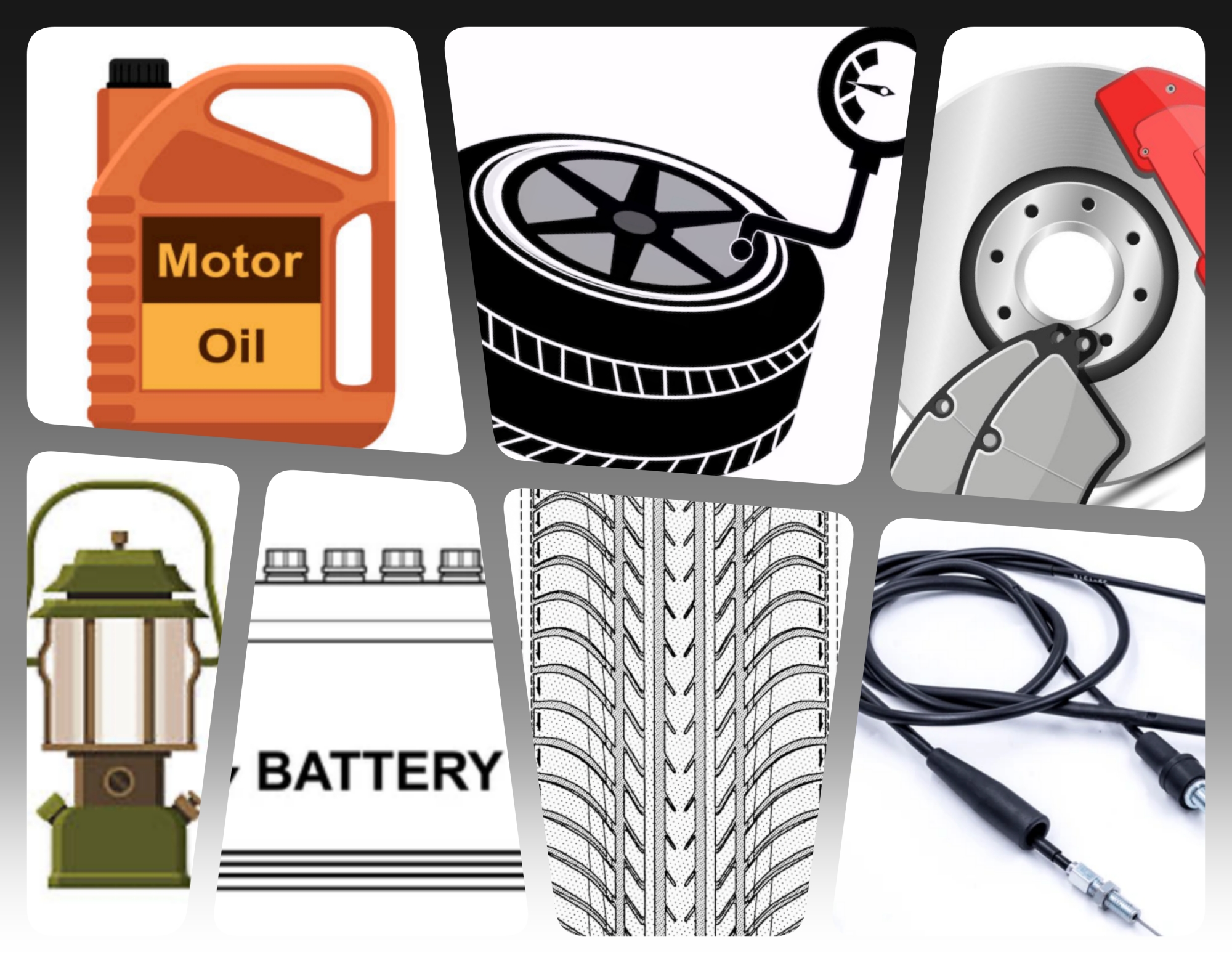Wanna to go for a bike trip, solo or with team, do plan it well…..! Planning for a bike trip is essential to ensure a safe and enjoyable journey. Apart from the route plan, road condition understanding and motel booking, this article lists a few important checklist or items to be verified before embarking on a trip.
—————————————-
1. Engine Oil
Ensure oil quality is good enough to endure the long ride. How to check engine oil ? Finding the quality of engine oil is fairly straightforward. All you need to do is pull out the dipstick and observe the tip. You can also view the oil from the window provided on the side of the engine. If the colour of the engine oil is brackish, brownish, or black, the engine oil is old; if it’s yellow-greenish or amber, it’s new.
Of course it takes some experience to decide on oil quality. If in doubt, visit a local mechanic and take his opinion.
Brake oil is usually topped up at regular service and requires less maintenance.
A few videos to support, usually the same procedure for most bikes…..
—————————————-
2. Tyre status
Tread Level
Just take a 50p coin and insert it into the tread grooves on the middle of the tyre, not the side of it. If you can’t see the outer band on the coin, your tyres are above the legal limit. However, if you can see the band and that section of the coin is still visible, your tyres could be unsafe and require professional inspection by a mechanic.
A few other points,
Make sure your tyre is not older than 5 years since date of manufacturing. The date is printed as a 5 digit number on the side of the tyre.
Check for uneven wear out of tyre. If there is uneven wear on the sides then check the suspension. Usually when there is a suspension problem one side of the tyres get work out more.
Punctures are temporary fixes only. It’s always safe to change tyres if there are there is no air pressure drop and punctures are fixed.
Pressure
Ensure your tyres are inflated to right pressure level.
Supporting videos, the simple system of verification is same for all car and bike tyres.
—————————————-
3. Brake Pads
Check both the front & rear brake pads are not worn out. Always use the OEM recommended brake pads. This ensures that the wear of the rotor is at optimum level. Cost of rotors are very high and by saving a few pennies on cheap brake pads don’t end up in a position to change entire rotors(discs).
—————————————-
4. Clutch & Accelerator Cable
It’s always best to carry a spare clutch and accelerator cable, Usually if regular maintenance is done for the bike, the service centres change the cables at regular intervals. To be on safe side, better to carry a spare cable.
5. Battery, Fuse & Lights
Bike battery manufacturers have a specific life span for batteries. Check your battery health and ensure to change to new set of batteries if its nearing end of life. Usually the least problem is with the fuse & lights. Its safe to carry a spare fuse. The latest LED lights are even more durable and don’t create much of a problem.
General Points
Always remember to carry a first aid kit, essential medicine, spare caping lights for emergency use, phone power banks, tool kit.

